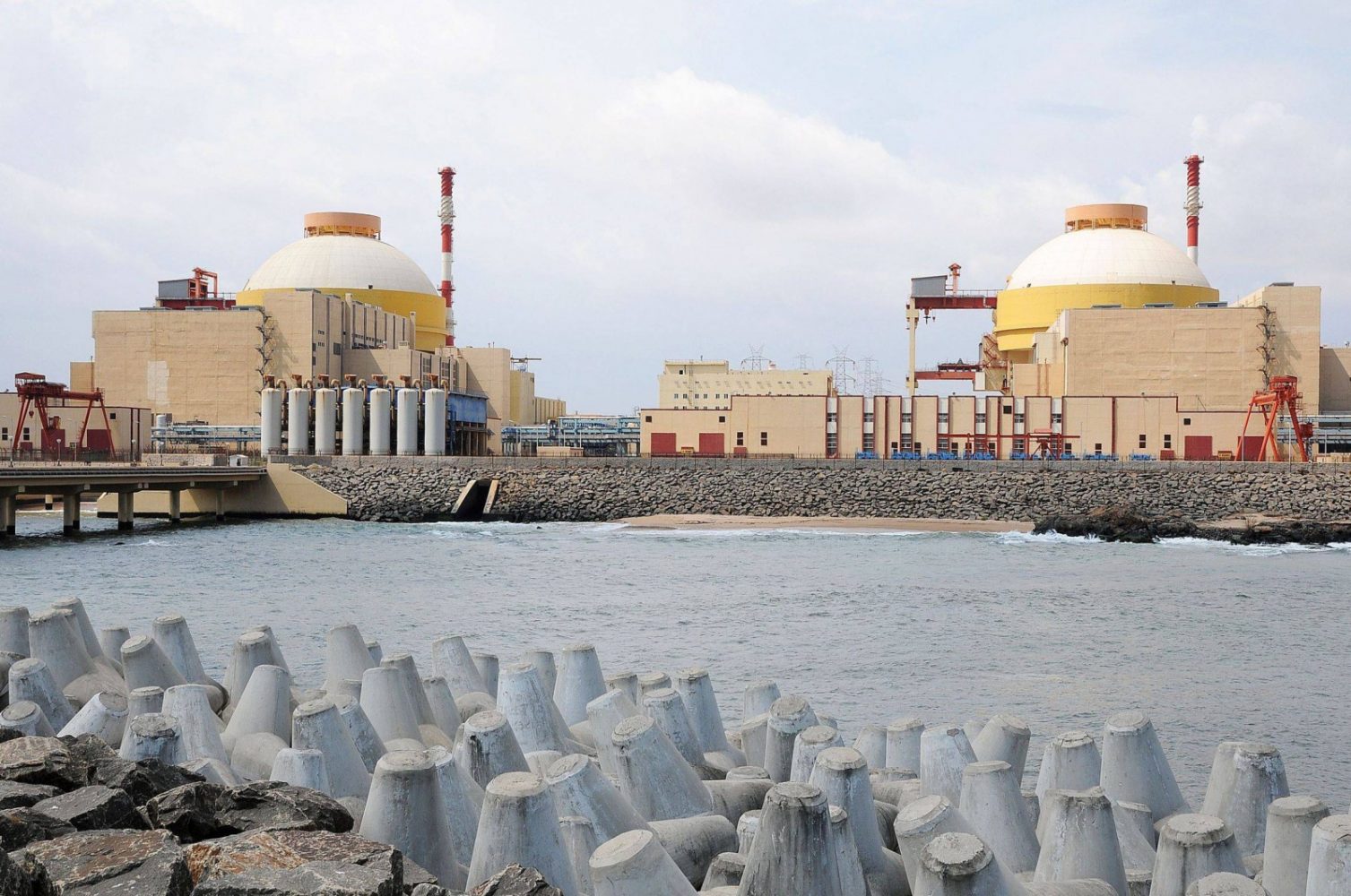
Kudankulam-1 Handed Over to India
back to contentsOn 10 August, Vladimir Putin and India’s Prime Minister Narendra Modi took part in a video conference devoted to the handover of Kudankulam Unit 1 to India. According to Narendra Modi, Russia and India are not going to cease their nuclear cooperation. “Kudankulam alone will have five units with a capacity of 1,000 MW each. Our plans are to build a series of large nuclear power plants,” said the Indian Prime Minister. “Spasibo vam bolshoye!” Mr. Modi thanked the audience in Russian. In his turn, Vladimir Putin said that Russia expected to sign construction documents for the third project phase covering Kudankulam Units 5 and 6, by the end of the year. “I am sure that our joint efforts in this and other economic areas, notably in hi-tech, will yield tangible results and enable rapid, efficient development of our economies,” said Russia’s President.
The second reactor unit is to be connected to the national power grid in late August. India’s Atomic Energy Regulatory Board has already given a go-ahead to raise the unit’s capacity, which virtually means consent to the grid connection.
“Kudankulam units are for now the most powerful in India, both among nuclear stations and coal-fired thermal units,” remarked Malur Ramasamy Srinivasan, founder of the Nuclear Power Corporation of India Limited (NPCIL). He stressed the importance of nuclear power for India. “People need electric power. Reliable generation is essential for key areas of the national economy, particularly manufacturing industries and agriculture, as well as infrastructure projects in general. Besides, nuclear energy and renewables will reduce India’s dependence on hydrocarbons.”
Another important aspect is involvement of local contractors in the nuclear station project. They are already manufacturing certain components for the nuclear station, but their range and scope may be extended greatly. Ramayahi Shanmugam Sundar, Kudankulam site director, said that the new project phase would attract considerably more local manufacturers than the first two units. Reactor vessels and heavy equipment for Units 3 and 4 have been ordered already, he added. Just as before, heavy equipment for the reactor island will be supplied by Russian manufacturers. Many other components (particularly electric equipment, compressors, secondary circuit parts, etc.) will be designed and manufactured by Indian companies. “The bidding process might be international, but suppliers from India are very much likely to meet our requirements,” said Ramayahi Shanmugam Sundar.
He expects that Indian vendors will account for up to 30% of the engineering part of the project. It is too early though to speak about the Indian share in the nuclear station equipment since bidding procedures are not completed yet. Ramayahi Shanmugam Sundar noted that Indian engineers had gained extensive experience from the construction and installation at Units 1 and 2 under the supervision of Russian experts.
EXPERTS SPEAKING
Pavel Alexeyev
Head of Advanced Energy Technologies at Kurchatov Institute
– We boost capacity of operating VVER-1000 reactors by 4%, sometimes by 7%. We can do this because they have sufficient safety margins as predictive modeling has become more reliable and uncertainties have decreased. In other words, operating parameters can be increased, with safety threshold not exceeded. Finland’s Loviisa NPP with a VVER-440 reactor was the first to use this practice. A capacity boost means an increase in power output. It will be a pleasant surprise for India as the country has expected lower efficiency and capacity and, if they are increased, will gain more benefit from the nuclear plant operation. India will cash in higher profits than expected. The country paid money for lower performance, but will generate more power. This means they will earn additional, unforeseen money. It was an improved equipment quality that made it possible.
Throughout all these years, we have never stopped building power units and got hand in it, having increased reactor efficiency. When we signed a contract with India, equipment performance was somewhat lower than now. It was the time when we were getting our nuclear industry back on track and recovering our production capacities. Once the entire production chain was re-established, we managed to decrease uncertainties. It might happen that differences appear even in reactor loops made by the same manufacturer. These differences become particularly noticeable when coolant loops are assembled. It is bad when differences are large. Uncertainties can be eliminated only when several reactor units will demonstrate consistent parameters, similar to those of the Indian reactor. We have succeeded once and now have an excellent reference facility for other units.




